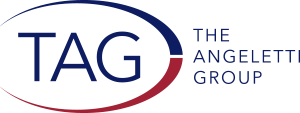7 Tips to Get Your Board Engaged in Its Most Important Objective: Philanthropy
It is well-known that a board’s role for both non-profit and for-profit organizations includes fiduciary and legal oversight. It is equally true that fundraising has never been a more crucial board responsibility than it is today.
That raises the question: how do you ensure your trustees show their dedication through the hard work, diligent asks, and referral of prospects that mark a high-performing board member? This challenge is heightened in non-profits where these leaders must not only bring value and contacts but also make significant philanthropic gifts. The best boards and board members know this, celebrate it – and relentlessly promote a culture of relationship-building and philanthropy. They recognize this work is as important as the organization’s mission!
Some boards struggle with this challenge. Many non-profits still grapple with boards where members don’t have the skills, confidence, or training to help the organization meet its financial goals. As competition increases and astute non-profits diversify responsibility beyond senior management and staff fundraisers, sub-optimal fundraising by a board is detrimental. Below are seven tips to ensure your board members are committed and delivering the fundraising support you need:
Ensure your organization itself puts fundraising first.
Have you shown your commitment to fundraising by allocating your financial and human resources appropriately? Allot the time to create a clear fundraising strategy, staff your development office commensurate with your financial goals, and make enough asks. You can’t expect your board to go to the mat for your organization unless they see you have built a philanthropic culture.
Make certain your board understands and lives your case statement.
This is not just an expression of your organization’s value and mission; it is also the core around which your internal team and other key contributors, including board members, converge (read more in our recent blog post). It is critical that members believe in your case and can cite it fluently, whether at in-person meetings, on phone calls, or at events.
Set clear expectations for board responsibilities – including guidelines for giving.
Are you confident that each board member understands his or her role? In particular, is each member aware of the need to perform tasks that may trouble volunteers, such as making the ask and connecting with potential donors? Likewise, do you require every board member to donate? Whether you set a minimum gift or enact a get/give policy, 100% board participation in philanthropy is key because it demonstrates the board’s clear investment in your organization – and sets the tone for others to give.
Don’t limit yourself, or your board.
While some boards believe they cannot raise significant philanthropic support because they are “grass roots” or “too young” or myriad other reasons, it’s just not true. My colleagues and I are blessed to work with many non-profits—large and small, newer and established – and we see under-performers and high-performers. It’s all about the rigor and genuine commitment with which they approach their true development work.
“Get the right people on the bus” (board).
Often overlooked in the assessment of board performance and hand-wringing over some members’ underperformance is the simple question: is this person a fit for your board’s goals? Not everyone is suited for the rigorous requirements of many non-profit boards today. For board members who are not stepping up, reiterate your expectations and take appropriate action at the right time, using those experiences to hone your criteria for future memberships.
Train your board on key fundraising strategies.
Even when your members are well-versed in your case statement, some will still need additional training in tools and approaches that come naturally to other members. This can include role-playing at a board meeting, the use of checklists, videos of effective fundraising approaches, assistance with elevator pitches, and guidance on referrals and provision of names. Make it easier for your members to help you!
Personalize your assignments with non-asks and mentoring.
You already know which board members are less comfortable with challenging fundraising requirements, or you will soon find out. Some people will never be as effective as your aces, but you can also find creative solutions. Put the less assertive members in roles that emphasize non-ask events and other low-pressure scenarios. Especially for less experienced members, assign a formal or even informal mentor to show and tell techniques and bring the unseasoned person along slowly.
Getting your board fully engaged in fundraising isn’t easy – but it is achievable, and ideally these tips will help your organization.


